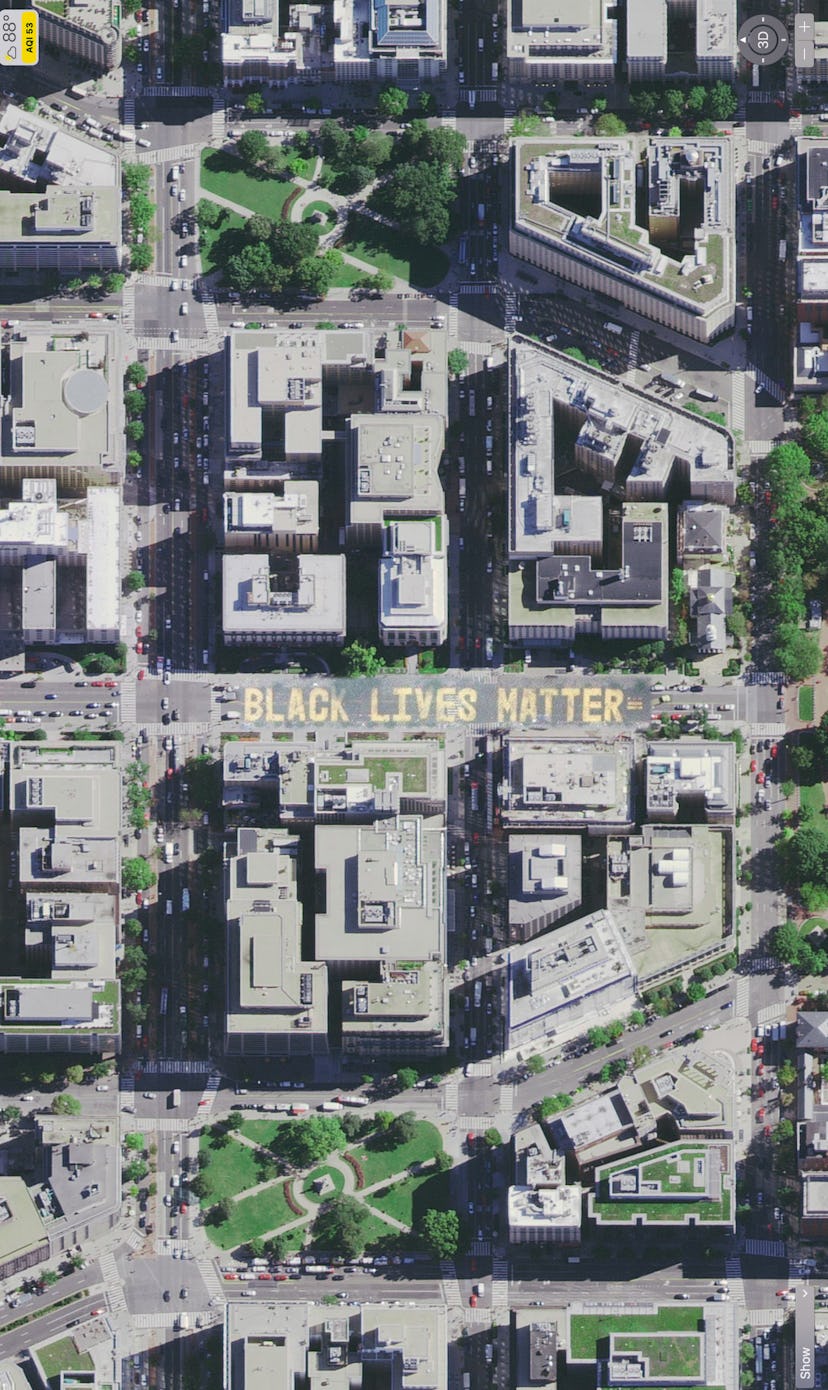Read and Resist: W’s Daily Briefing for June 9th
From thoughts on Washington's new mural to what was so odd about congressional democrats in kente cloths, here's what to read to stay informed today.

Back in the day, W started off the morning with a quick round-up of links to that day’s fashion- and culture-related news. Times have changed; in the week since a white police officer named Derek Chauvin killed an unarmed black man named George Floyd, protests have erupted across the country. Now, more than ever, it’s important to stay up to date, which is why we’re reviving “Chic in Review” as the slightly more radical “Read & Resist.” Here are the stories, videos, and tweets we’re hoping you don’t miss this Tuesday:
“I Have Waited for a Revolution My Entire Life” by Keke Palmer for Variety
In a guest column for Variety, the actress Keke Palmer recounts her experience marching with protestors in Los Angeles, when she challenged National Guardsmen to join them instead of blocking their path. “We’re out here, fighting for a call to protect human lives,” she writes. “And the government is telling you to protect a building? That doesn’t add up to me, and I wanted to challenge them with the question, ‘How does that add up to you?’” She also reflects on the long history of oppression in American life, and why she feels so compelled to speak up right now: “I truly believe that everything that has led us to this moment has prepared us for a revolution and a revelation: the dismantling and rebuilding of a system that is better, more equitable and representative of the people it claims to represent.”
“Congress’s Kente Cloth Spectacle Was a Mess of Contradictions” by Robin Givhan in the Washington Post
Yesterday, a group of congressional democrats that included House Speaker Nancy Pelosi, Senator Chuck Schumer and Senator Kamala Harris announced new police reform legislation that was overshadowed by the fact that they chose to do it while wearing stoles made of kente cloth, a traditional Ghanaian textile. The public was generally not pleased with what they perceived as tone-deaf appropriation. In this morning’s column, the always brilliant Washington Post critic Robin Givhan pulls apart what made the whole thing so cringe-y. “Fashion has the ability to speak volumes about one’s intent. And in this case, the message was both self-conscious and artless,” she writes. “In their eagerness to display dazzling empathy and solidarity, they only muddied the current conversation about race.”
“The Mimetic Power of D.C.’s Black Lives Matter Mural,” by Kyle Chayka for the New Yorker
Last week, Washington, D.C. mayor Muriel Bowser renamed a stretch of street in front of Lafayette Square “Black Lives Matter Plaza,” and had the phrase painted in bright yellow, fifty-foot letters along two blocks. For the New Yorker, the writer Kyle Chayka examines the impact of this new breed of public artwork, which some have criticized as an empty gesture that doesn’t reflect the mayor’s own policies. “The mural reminds us that, by marching these recent weeks, we are using our physical presence in public to communicate, an action that’s even more potent given the long isolation of quarantine and the lack of access to art caused by the shuttering of museums,” Chayka writes.
“‘This You?’ (It Definitely Is)” by Aisha Harris for the New York Times Opinion Section
In this op-ed, New York Times staff editor Aisha Harris charts the rise of the Twitter meme that is haunting milquetoast virtue-signalers with “a pesky little critter best described as The Ghost of Racism Past.” In a few notable instances, celebrities and influencers who have shared support for the Black Lives Matter movement have been called out with a simple “This you?” and a screenshot that undercuts the performative post. “‘This you?’ captures the sense among some that for all the attention given and demonstrating and donating that has occurred in the past two weeks, not much has changed — yet,” Harris writes. “It highlights the hypocrisy and disconnect between actions and words, and does so in the infinitely shareable, memeable, retweetable syntax of the internet.”
“Chief Editor at ‘Bon Appétit’ Resigns After Racially Offensive Photo Surfaces” by Scott Neuman for NPR
Twitter lit up yesterday after the food writer Tammie Teclemariam surfaced an Instagram photo from 2013 that showed Bon Appetit editor in chief Adam Rapoport in brownface. Many current and former staffers and contributors started speaking out against a culture of discrimination at the magazine against staffers of color, particularly as it pertains to being compensated for appearances on its highly lucrative YouTube channel. The outcry, outlined here by NPR journalist Scott Neuman, led to Rapoport’s resignation. It also prompted a statement from Condé Nast, which owns the publication, as well as an emergency (virtual) town hall meeting.
“White Female Founders Face a Reckoning Over Racism” by Emma Hinchliffe in Fortune
Over the past week, former employees at the sustainable fashion brand Reformation, the accessories company Ban.do, and the women’s website Refinery29 have shared their experiences of discrimination at the companies, leading to apologies and resignations from leadership. “The common thread among these upheavals—reminiscent in their speed and quantity of the early days of the #MeToo movement—is not just the allegations of racism but outrage over a sense of hypocrisy,” Emma Hinchliffe writes in this piece for Fortune.
Newsreel:
Food for Thought:
Related: The Moment Must Be About Real Police and Justice Reform, Not Vague Hashtags